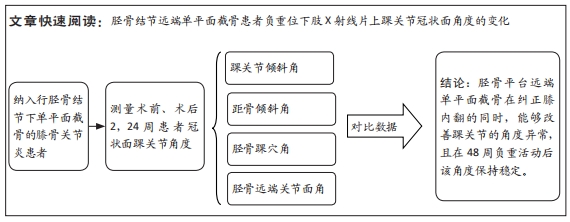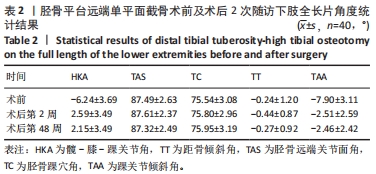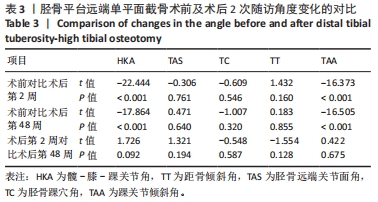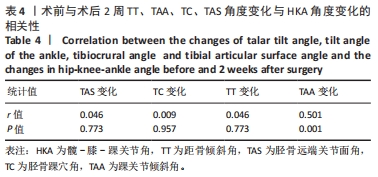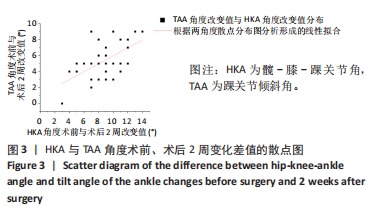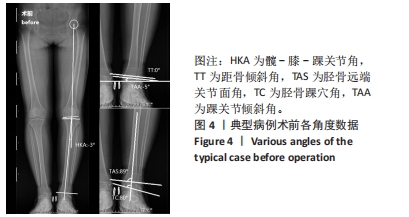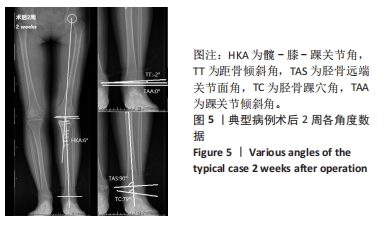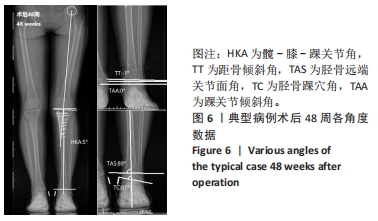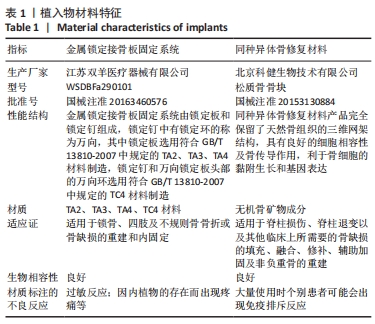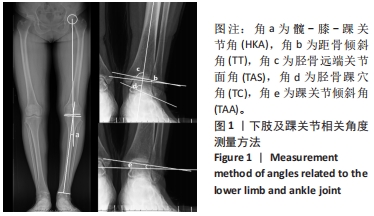[1] 孙茂淋,何锐,郭林,等.开放楔形胫骨高位截骨术的临床应用及研究现状[J].中国修复重建外科杂志,2019,33(5):640-643.
[2] SAITO T, KUMAGAI K, AKAMATSU Y, et al. Five- to ten-year outcome following medial opening-wedge high tibial osteotomy with rigid plate fixation in combination with an artificial bone substitute. Bone Joint J. 2014;96-B(3):339-344.
[3] JUNG WH, TAKEUCHI R, CHUN CW, et al. Second-look arthroscopic assessment of cartilage regeneration after medial opening-wedge high tibial osteotomy. Arthroscopy. 2014;30(1):72-79.
[4] JANG YW, LIM D, SEO H,et al. Role of an anatomically contoured plate and metal block for balanced stability between the implant and lateral hinge in open-wedge high-tibial osteotomy. Arch Orthop Trauma Surg. 2018;138(7):911-920.
[5] LEE JH, JEONG BO. Radiologic changes of ankle joint after total knee arthroplasty. Foot Ankle Int. 2012;33(12):1087-1092.
[6] JEONG BO, SOOHOO NF. Ankle Deformity After High Tibial Osteotomy for Correction of Varus Knee: A Case Report. Foot Ankle Int. 2014;35(7): 725-729.
[7] GAO F, MA J, SUN W, et al. The influence of knee malalignment on the ankle alignment in varus and valgus gonarthrosis based on radiographic measurement. Eur J Radiol. 2016;85(1):228-232.
[8] 桂斌捷,张金陵,荣根祥,等.外翻膝全膝关节置换术后膝-踝关节力线评估[J].中华老年骨科与康复电子杂志,2021,7(4):222-230.
[9] JEONG BO, KIM TY, BAEK JH, et al. Following the correction of varus deformity of the knee through total knee arthroplasty, significant compensatory changes occur not only at the ankle and subtalar joint, but also at the foot. Knee Surg Sports Traumatol Arthrosc. 2018; 26(11):3230-3237.
[10] KYUNG MG, CHO YJ, HWANG S, et al. Change in intersegmental foot and ankle motion after a high tibial osteotomy in genu varum patients. J Orthop Res. 2021;39(1):86-93.
[11] 吴子光,何君源,唐剑邦,等.胫骨内侧开放楔形截骨术对膝内翻患者踝关节的影响[J].中国中医骨伤科杂志,2021,29(11):18-23+27.
[12] KIM JG, SUH DH, CHOI GW, et al. Change in the weight-bearing line ratio of the ankle joint and ankle joint line orientation after knee arthroplasty and high tibial osteotomy in patients with genu varum deformity. Int Orthop. 2021;45(1):117-124.
[13] CHOI GW, YANG JH, PARK JH, et al. Changes in coronal alignment of the ankle joint after high tibial osteotomy. Knee Surg Sports Traumatol Arthrosc. 2017;25(3):838-845.
[14] KONRADS C, EIS A, AHMAD SS,et al. Osteotomies around the knee lead to corresponding frontal realignment of the ankle. Eur J Orthop Surg Traumatol. 2022;32(4):675-682.
[15] 郑伟鑫.正常踝关节影像学角度分析[D].西安:西安医学院,2021.
[16] KRACKOW KA, MANDEVILLE DS, RACHALA SR, et al. Torsion deformity and joint loading for medial knee osteoarthritis. Gait Posture. 2011; 33(4):625-629.
[17] 张旻,江澜.内侧间室膝骨性关节的下肢关节生物力学变化[J].中国康复,2011,26(1):36-38.
[18] GONÇALVES GH, SENDÍN FA, DA SILVA SERRÃO PRM, et al. Ankle strength impairments associated with knee osteoarthritis. Clin Biomech (Bristol, Avon). 2017;46:33-39.
[19] ASTEPHEN JL, DELUZIO KJ, CALDWELL GE, et al. Biomechanical changes at the hip, knee, and ankle joints during gait are associated with knee osteoarthritis severity. J Orthop Res. 2008; 26(3):332-341.
[20] TALLROTH K, HARILAINEN A, KERTTULA L,et al. Ankle osteoarthritis is associated with knee osteoarthritis. Conclusions based on mechanical axis radiographs. Arch Orthop Trauma Surg. 2008;128(6):555-560.
[21] MURRAY R, WINKLER PW, SHAIKH HS, et al. High Tibial Osteotomy for Varus Deformity of the Knee. J Am Acad Orthop Surg Glob Res Rev. 2021;5(7):e21.00141.
[22] LIU X, CHEN Z, GAO Y, et al. High Tibial Osteotomy: Review of Techniques and Biomechanics. J Healthc Eng. 2019;2019:8363128.
[23] 徐奎帅,张靓,陈进利,等.内侧开放楔形胫骨高位截骨后早期力线改变对下肢关节的影响[J].中国组织工程研究,2022,26(6):821-826.
[24] TAKEUCHI R, SAITO T, KOSHINO T. Clinical results of a valgus high tibial osteotomy for the treatment of osteoarthritis of the knee and the ipsilateral ankle. Knee. 2008;15(3):196-200.
[25] 李珂,孙凤龙,王宏庆,等.改良单平面胫骨高位截骨术治疗膝关节骨关节炎的早期临床研究[J].中华骨与关节外科杂志,2020, 13(9):729-735.
[26] 韩昶晓,田向东,王剑,等.胫骨结节远端单平面截骨术对髌骨高度的影响[J].中华关节外科杂志(电子版),2020,14(5):559-564.
[27] 许康永,童也,赵鹏,等.两种截骨术式治疗膝关节内侧间室骨关节炎的疗效比较[J].中国修复重建外科杂志,2021,35(11):1440-1448.
[28] LAMM BM, STASKO PA, GESHEFF MG, et al. Normal Foot and Ankle Radiographic Angles, Measurements, and Reference Points. J Foot Ankle Surg. 2016;55(5):991-998.
[29] PARK CH, KIM JB, KIM J, et al. Joint Preservation Surgery for Varus Ankle Arthritis with Large Talar Tilt. Foot Ankle Int. 2021;42(12):1554-1564.
[30] KIM J, KIM JB, LEE WC. Eccentric ankle arthritis in the sagittal plane: a novel description of anterior and posterior ankle arthritis. Foot Ankle Surg. 2021;27(8):934-941.
[31] TSENG TH, WANG HY, TZENG SC, et al. Knee-ankle joint line angle: a significant contributor to high-degree knee joint line obliquity in medial opening wedge high tibial osteotomy. J Orthop Surg Res. 2022;17(1):79. |
